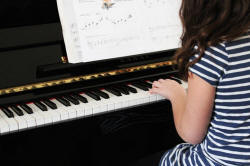TKT Core Module 2: Lesson planning and use of
resources for language teaching
Planning an individual lesson or sequence of lessons

As was said at the beginning of the previous guide, very few teachers have the time to write full lesson plans for
every lesson they teach so what follows is based on the ideal
world.
If you are taking, have taken or will take a practical teacher
training course, you will probably have to write full plans.
 |
Key concepts in this guideBy the end of this guide, you should be able to understand and use these key concepts: |
Look out for these words like this
in the text.
There will be tests at the end of the guide for you to check that
you understand the ideas.
 |
Three alternative lesson structures |
There are almost as many ways to plan a lesson as there are
teachers to teach them.
Before we can begin to plan a lesson or a series of lessons,
however, we need to be clear about what sort of lesson we are
designing.
Here we will consider three basic lesson structures and look at
what they are appropriate for and how we can plan them.
Here's a picture:

And here's the explanation:
- PPP refers to Present → Practice
→ Produce. This is a
very common framework for lessons of all kinds. It is
familiar, simple and often effective. It usually works
like this:
- The topic and target are introduced at the outset.
- The core of the lesson lies in progressively less controlled practice.
- At the end, the learners can use the language in a personal way for real communication.
- TTT refers to Test → Teach → Test and is almost equally
common and but is less straightforward to plan because the
teacher must respond and adapt to what emerges from the first
testing stage.
- The lesson begins with tasks to test the learners' ability to do things with the language. This alerts both the learners and the teacher to what needs to be improved or learned.
- The actually teaching and practice come next with the focus on analysing and practising.
- Finally, the tasks are repeated or new, parallel ones are set to allow everyone to judge how well the lesson's targets have been achieved.
- TBL refers to Task-Based Learning. This is not common
as a structure but has great advantages in terms of requiring
the learners to use their language skills to the full right from
the beginning. It is also useful if you have a very
mixed-level group of learners because they can all achieve the
task in some way.
There are differences in how people plan lessons of this kind with some preferring to teach language first and some preferring to teach the language after the task is complete so the sequence could be:- Possibility 1:
- Presentation of the task
- Do the task
- Report back on the task outcomes
- Analysis of the language produced with correction
- Practice of the language the learners needed to command.
- Possibility 2:
- Practice of the language the learners will need
- Presentation of the task
- Do the task
- Report back on the task outcomes
- Revisit, revise and extend the language skills and systems
- Possibility 1:
All three lesson types can be used to target skills, systems and
integrated skills and systems.
All three structures can also be used for all kinds of lessons
although some are better suited to presentation of new language and
skills and some to revision and extension of language and skills
already learned.
 |
Three alternative lesson purposes |
Lessons can have three main purposes, too, although many lessons have a combination of these.
- To teach something completely new: presenting
- To extend knowledge and skills from what is already known: extending
- To revise and provide more practice: revising
 |
Task 1:
Think about these situations and decide what lesson
structure(s) is/are best suited to the targets of the
lesson. |
| Target | ... is a suitable lesson structure ... because ... |
|
Teaching past-tense forms to a
group of beginners |
If they really are nearly beginners and have never met
the forms then a PPP approach is probably well suited.
A TTT approach would not be helpful because the answers to any test would be random. A TBL approach at this level for this target would be difficult to design and manage. |
| Revising
and practising intensive listening skills |
A TTT approach would be useful because it would focus
the learners on using the skill to perform a task at the
beginning. The teaching could then focus on
listening strategies and the class could practise
applying the strategies at the end.
A PPP approach would be in danger of being dull because the learners already know about intensive listening. They need practice not information. A TBL approach is usually unsuited to focus on a single skill as it intentionally provides integrated language and skills practice. |
| Focusing
on questions forms and functions to do with giving and
getting opinions |
A PPP approach could work well if the class are at a
level where they need a focus on question forms before
using them to perform the function of asking about
opinion but this approach would also need to focus on
giving opinions and that might be too much for a
presentation.
A TTT approach could work if the task at the beginning alerts the learners to the fact that they need more language and more options to perform the functions successfully. A TBL approach centred on a task to survey the opinions of other students (or the general public or staff at the institution) could work very well because the topic is suited to some kind of report presentation. |
 |
Decision time |
Before you can get down to planning a lesson, you need to decide:
- What is the purpose of my lesson?
- What lesson structure(s) would be suited to this purpose?
Once those decisions are made, you can proceed. Not before.
 |
Staging lesson procedures |
A PPP presentation lesson
These will need three stages at least. Here they are:
- presenting the new language or skill
- carefully practising the language or skill in a situation which avoids too much error. In other words, this stage must be quite tightly controlled
- using the new language or skill more freely and in a way which is personal and clearly relevant to the learners
Now you need to download an example of a plan of this sort. Click here to do that. The plan will open in an new tab so you can have it on screen or print it out (or even use it!).
 |
Task 2: Read through the plan to identify:
|
| Click here when you have done that. | |
- Stage 1 (15 minutes) is the presentation phase.
Here the learners look at the pictures and try to identify the name of the activity. If they can't, the teacher has to provide it (or the learners could use their dictionaries / ask each other etc.).
Note that the teacher's job here is to supply and model language. That's what presentation is all about. - Stage 2 (15 minutes) is very tightly controlled practice.
All the learners have to do is change positive sentences to negative ones and vice versa. They change, e.g., I like fishing to I don't like fishing or I like shopping to I hate shopping / I don't like shopping.
The aim here is to get the learners to use the language accurately so the task is simple. The teacher's role is to monitor and spot problems, helping people to get it right. - Stage 3 (15 minutes) is freer practice and gets the students
moving around (often A Very Good Thing).
Notice that the language is, again, personalised for the students. They have to ask and answer questions in a way which is true for them. Making language personal makes it memorable. - Stage 4 (15 minutes) is revision and a bit of fun. If the lesson has overrun (it is planned for 60 minutes but could take longer and probably would with a large class) then this stage can be left until later and form the basis of a revision lesson.
The lesson staging can be used for many different purposes. For example, it could easily be adapted to present and practise things you are allowed to do (I can ...) and things that are forbidden (We can't ... / mustn't ...). All that's needed is some different pictures and a change to the worksheet.
skills lessons
 |
Task 3:
Now
download a skill lesson plan and do the same thing. Read through the plan to identify
:
|
| Click here when you have done that. | |
- Stage 1 presents the target of the lesson by getting the
learners to look at a model text and analyse it.
If this were a speaking lesson, this might be done through the learners reading / watching / listening to a model dialogue or some other form of speaking. - Stage 2 focuses on the language the learners will need to
complete the task.
This is an important stage because it is very frustrating to be asked to complete a task for which you know you don't have the resources. - Stage 3 gets the learners to cooperate in brainstorming what
they are going to write.
This, too, is an important stage because it allows the learners a bit of time and space to get their ideas together. We all perform better with a bit of preparation. - Stages 4 and 5 could be left to a later lesson.
This is the productive stage and again asks the learners to cooperate to produce a result. Note that the result is valued by, in this case, a poster presentation for everyone to read. It could be done orally but this is a writing lesson so it's logical to pair it with reading.
revision lessons
 |
Task 4: There's no example for this because, rather obviously, it depends on what you are revising. For the two lessons above, however, think for a moment about how you might revise the targets and then click here. |
- The personal likes and dislikes language could be recycled
in a number of ways, including:
- getting the learners to carry out a survey of another group's likes and dislikes
- reading a text about someone's likes and dislikes and reporting back
- writing a letter / email setting out one's likes and dislikes
- The report-writing lesson target could be revised by also:
- getting the learners to tell you / each other how a report is written
- getting the learners to write a report on something different
- getting the learners to present an oral report to the class with one topic for each group
The important thing is that language and skills lessons need to be revised.
There are some more examples of plans you can copy, use adapt or analyse in the teachers' section of this site.
 |
Sequences of lessons |
Planning sequences of lessons is a matter of applying the same
sort of thinking but on a bigger scale. Over a series of
lessons, a range of purposes and appropriate lesson structures will
be useful.
This will add variety to the course and keep the lessons fresh and
engaging but it will also mean you can match the lesson style to the
stage of the course. A short course series could look
something like:

Some notes:
 |
Self-test questions |
Before you go on, make sure you can answer these questions. If you can't, go back to the sections which give you trouble.
If you are happy with your progress, go on.
 |
Tests and practice for TKT |
There is only one test for this short guide.
| Test 1 | A matching task |
| Test 2 | A 15-item gap-fill test |
... return to the Module 2 index:
![]()
or go on to the next
guide which is to choosing assessment activities.
